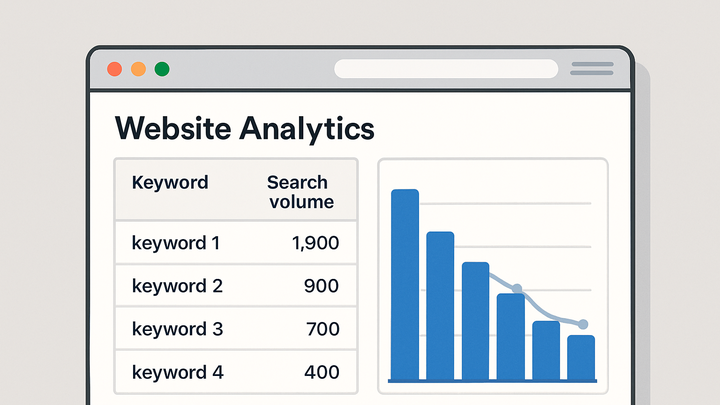Published on 2025-06-22T05:35:54Z
What is a Search Query? Examples in Analytics with GA4 and PlainSignal
A Search Query in analytics refers to the exact keyword or phrase that users input into a search function, either on your website’s internal search engine or on external search engines like Google. Tracking search queries helps you understand user intent by revealing what visitors are looking for, so you can optimize content, improve navigation, and tailor marketing campaigns. In analytics platforms such as Google Analytics 4 (GA4) and privacy-focused tools like PlainSignal, search queries are captured as a dimension or event parameter. GA4 allows you to configure site search tracking by capturing query parameters, while PlainSignal provides a minimalist, cookie-free approach to monitoring search behavior. By analyzing search queries, businesses can identify content gaps, refine SEO strategies, and enhance the overall user experience. Accurate implementation and data governance are vital to ensure privacy compliance and data quality.
Search query
Search Query is the keyword or phrase users enter in site or engine searches, tracked via analytics tools like GA4 or PlainSignal.
Definition and Context
This section explains what a search query is and how it fits within web analytics.
-
Internal vs. external search queries
Internal search queries are the terms users input into your website’s search bar. External search queries originate from search engines like Google or Bing and drive traffic to your site.
-
Internal searches
Reveal on-site user intent and help optimize content discoverability within your domain.
-
External searches
Reflect organic SEO performance and highlight which keywords attract visitors via search engines.
-
-
Dimension in analytics tools
In analytics platforms, search queries are captured as dimensions or parameters, allowing you to segment and report on user search behavior.
Importance of Tracking Search Queries
Understanding search queries empowers data-driven decisions and user-centric improvements.
-
Understanding user intent
Search queries directly reflect what users are seeking, enabling you to align content and features with their needs.
-
Content and seo optimization
Analyzing search terms highlights content gaps and high-potential keywords for organic traffic growth.
-
Enhancing site navigation
Frequent search queries may indicate usability issues or navigation shortcomings, prompting UI improvements.
How to Track Search Queries
Implementation examples using GA4 and PlainSignal for capturing search term data without compromising privacy.
-
Google analytics 4 (GA4)
In GA4, enable site search tracking by adding your search query parameter (e.g., ‘q’) to the data stream settings under Enhanced Measurement. This captures the search term as the
search_termdimension. Example gtag setup:<script async src='https://www.googletagmanager.com/gtag/js?id=G-XXXXXXXXXX'></script> <script> window.dataLayer = window.dataLayer || []; function gtag(){dataLayer.push(arguments);} gtag('js', new Date()); gtag('config', 'G-XXXXXXXXXX', { 'search_term': new URLSearchParams(window.location.search).get('q') }); </script> -
PlainSignal (cookie-free)
PlainSignal offers a lightweight script to track search queries without cookies. Insert the following snippet into your HTML header:
<link rel='preconnect' href='//eu.plainsignal.com/' crossorigin /> <script defer data-do='yourwebsitedomain.com' data-id='0GQV1xmtzQQ' data-api='//eu.plainsignal.com' src='//cdn.plainsignal.com/plainsignal-min.js'></script>Use the PlainSignal dashboard to map the
search_queryevent parameter and visualize search term data.
Best Practices
Guidelines to ensure accurate, privacy-compliant, and actionable search query data.
-
Parameter filtering and sanitization
Normalize query strings by lowercasing, trimming whitespace, and removing special characters to maintain consistent reporting.
-
Categorization and grouping
Group similar queries (e.g., ’t-shirts’ and ‘tees’) using content groups or regex filters to simplify analysis.
-
Privacy and compliance
Avoid capturing personally identifiable information (PII) in search queries and adhere to GDPR/CCPA by anonymizing or truncating sensitive data.
Real-World Applications
Examples of how businesses leverage search query insights for tangible benefits.
-
User experience improvements
By surfacing common search terms, optimize navigation menus and landing pages, reducing search friction and improving satisfaction.
-
Seo strategy development
Identify high-value keywords from site search to inform content creation and paid search campaigns.
-
Product roadmap prioritization
Use search query trends to discover unmet user needs and guide feature development or inventory decisions.
